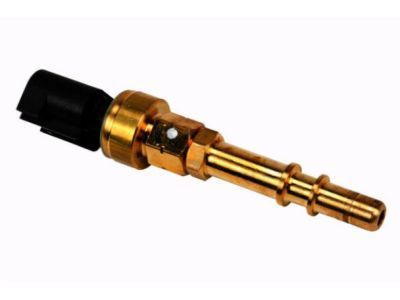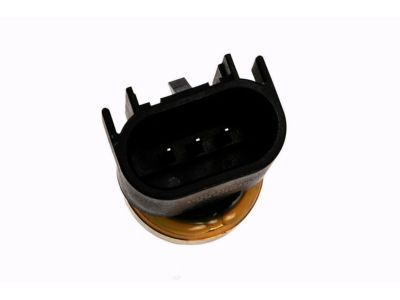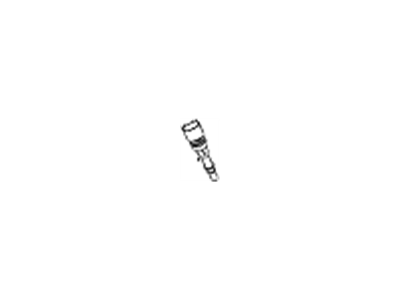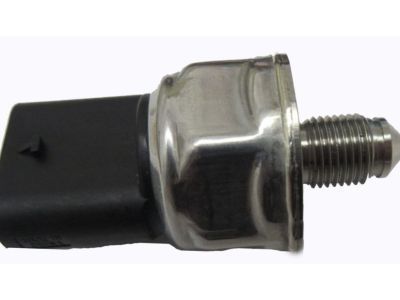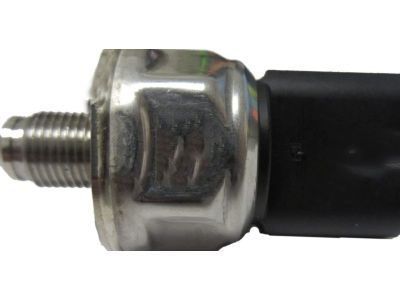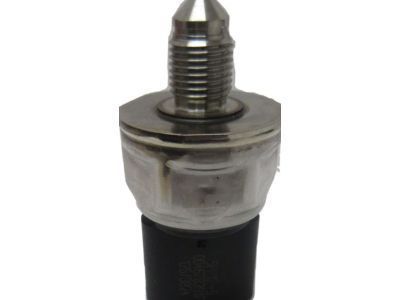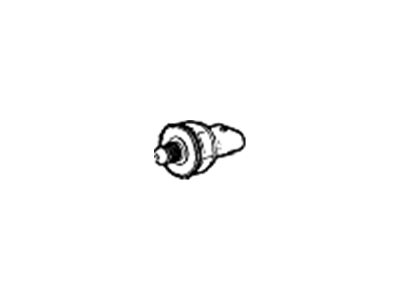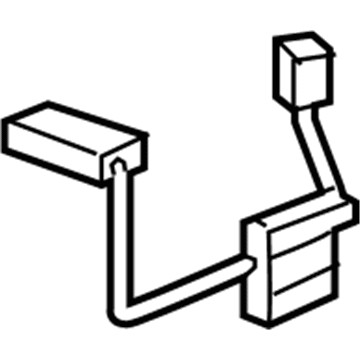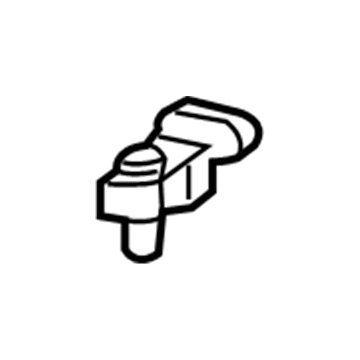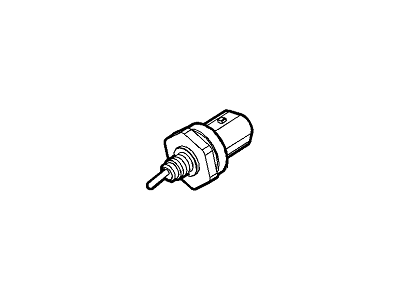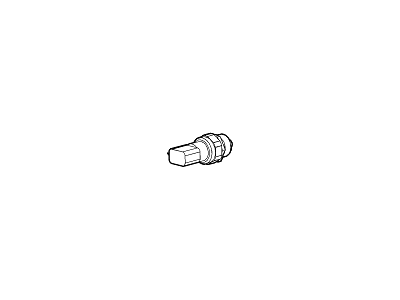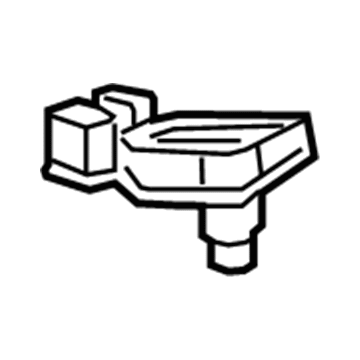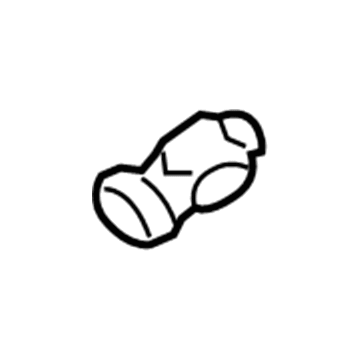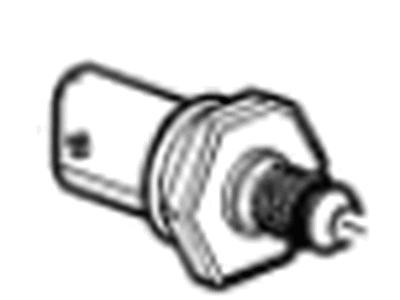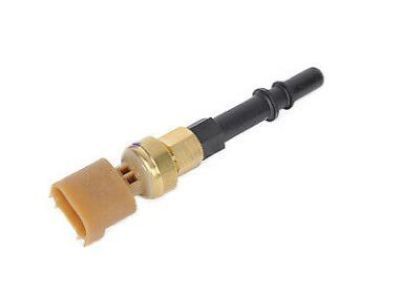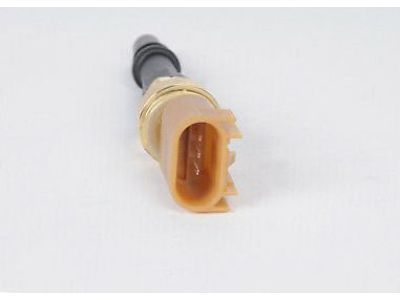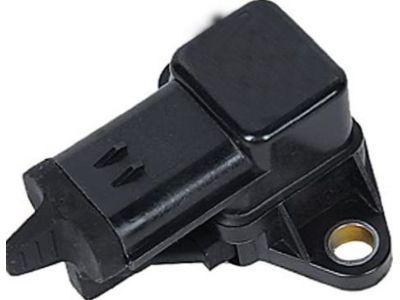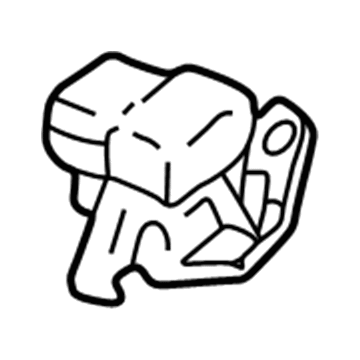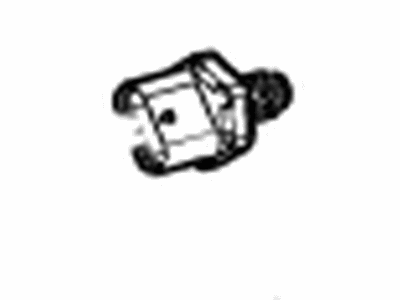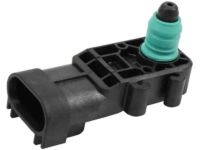ChevyParts
My Garage
My Account
Cart
OEM Chevrolet Fuel Pressure Sensor
Fuel Tank Pressure Sensor- Select Vehicle by Model
- Select Vehicle by VIN
Select Vehicle by Model
orMake
Model
Year
Select Vehicle by VIN
For the most accurate results, select vehicle by your VIN (Vehicle Identification Number).
34 Fuel Pressure Sensors found

Chevrolet Tank Pressure Sensor Part Number: 92261043
$62.82 MSRP: $117.98You Save: $55.16 (47%)Ships in 1-3 Business DaysProduct Specifications- Other Name: Sensor Assembly-Fuel Pressure; Sensor, Computer Control Sensors; Sensor, Fuel Tank Meter/Pump
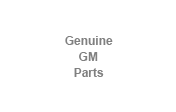
Chevrolet Pressure Sensor Part Number: 12673824
$65.33 MSRP: $132.70You Save: $67.37 (51%)Ships in 1-2 Business DaysProduct Specifications- Other Name: Sensor Assembly-Fuel Injection Fuel Rail Fuel Pressure; Fuel Tank Pressure Sensor; Fuel Pressure Sensor; Sensor, Computer Control Sensors
- Replaces: 12623130
Chevrolet Pressure Sensor Part Number: 13500744
$31.75 MSRP: $59.64You Save: $27.89 (47%)Ships in 1-2 Business DaysProduct Specifications- Other Name: Sensor Assembly-Fuel Pressure; Fuel Injection Pressure Sensor; Fuel Tank Pressure Sensor; Fuel Pressure Sensor; Sensor, Computer Control Sensors; Sensor, Fuel Tank Meter/Pump
- Replaces: 15239857
Chevrolet Level Sensor Part Number: 13577434
$30.50 MSRP: $57.28You Save: $26.78 (47%)Ships in 1-3 Business DaysProduct Specifications- Other Name: Sensor Kit-Fuel Level; Fuel Level Sensor
- Replaced by: 13592606
Chevrolet Pressure Sensor Part Number: 25201779
$58.26 MSRP: $109.40You Save: $51.14 (47%)Ships in 1-2 Business DaysProduct Specifications- Other Name: Sensor Assembly-Fuel Injection Fuel Rail Fuel Pressure; Sensor, Computer Control Sensors
- Replaced by: 28289963
Chevrolet Pressure Sensor Part Number: 22677575
$107.99 MSRP: $192.84You Save: $84.85 (44%)Ships in 1-3 Business DaysProduct Specifications- Other Name: Sensor, Fuel Tank Meter/Pump; Fuel Level Sensor; Fuel Gauge Sending Unit; Fuel Sender Unit
Chevrolet Pressure Sensor Part Number: 92264695
$91.41 MSRP: $171.66You Save: $80.25 (47%)Ships in 1-2 Business DaysProduct Specifications- Other Name: Sensor, Computer Control Sensors; Fuel Tank Pressure Sensor; Fuel Pressure Sensor
Chevrolet Pressure Sensor Part Number: 13500745
$29.73 MSRP: $55.84You Save: $26.11 (47%)Ships in 1 Business DayProduct Specifications- Other Name: Sensor Assembly-Fuel Pressure; Fuel Injection Pressure Sensor; Fuel Tank Pressure Sensor; Fuel Pressure Sensor; Tank Pressure Sensor; Sensor; Sensor, Computer Control Sensors; Sensor, Fuel Tank Meter/Pump
- Replaces: 13500747, 25780327
Chevrolet Pressure Sensor Part Number: 22991077
$174.88 MSRP: $316.52You Save: $141.64 (45%)Ships in 1-2 Business DaysProduct Specifications- Other Name: Sensor Assembly-Fuel Pressure; Fuel Tank Pressure Sensor; Fuel Pressure Sensor; Sensor, Computer Control Sensors
Chevrolet Pressure Sensor Part Number: 13516495
$34.97 MSRP: $71.02You Save: $36.05 (51%)Ships in 1-2 Business DaysProduct Specifications- Other Name: Sensor Assembly-Fuel Pressure; Fuel Injection Pressure Sensor; Fuel Tank Pressure Sensor; Fuel Pressure Sensor; Sensor, Computer Control Sensors
- Replaces: 13597320
Chevrolet Pressure Sensor Part Number: 25201778
$51.00 MSRP: $91.08You Save: $40.08 (45%)Ships in 1-2 Business DaysProduct Specifications- Other Name: Sensor Assembly-Fuel Injection; Fuel Rail Pressure Sensor; Fuel Tank Pressure Sensor
- Replaced by: 28289962
Chevrolet SENSOR,F/TNK PRESS Part Number: 09377680
$55.85 MSRP: $101.06You Save: $45.21 (45%)Product Specifications- Replaced by: 16238399
Chevrolet Pressure Sensor Part Number: 13574913
$29.96 MSRP: $46.76You Save: $16.80 (36%)Ships in 1-3 Business DaysProduct Specifications- Other Name: Sensor Kit, Fuel Tank Meter/Pump; Fuel Tank Pressure Sensor; Fuel Pressure Sensor; Tank Pressure Sensor; Sensor, Fuel Tank Meter/Pump
Chevrolet Pressure Sensor Part Number: 12219388
$55.85 MSRP: $101.06You Save: $45.21 (45%)Ships in 1 Business DayProduct Specifications- Other Name: Sensor Assembly, Fuel Tank Pressure
- Replaced by: 16238399
Chevrolet Water Sensor Part Number: 12375515
$127.49 MSRP: $239.42You Save: $111.93 (47%)Ships in 1-2 Business DaysProduct Specifications- Other Name: Sensor, Fuel Tank Meter/Pump
- Replaces: 12511965
Chevrolet Pressure Sensor Part Number: 12705503
$34.06 MSRP: $63.96You Save: $29.90 (47%)Ships in 1-2 Business DaysProduct Specifications- Other Name: Sensor Assembly-Fuel Injection; Fuel Rail Pressure Sensor; Fuel Tank Pressure Sensor; Sensor, Computer Control Sensors
- Replaces: 12672582

Chevrolet Pressure Sensor Part Number: 92239823
Product Specifications- Other Name: Sensor Assembly-Fuel Pressure; Sensor, Computer Control Sensors; Sensor, Fuel Tank Meter/Pump
- Replaces: 92206031

Chevrolet Pressure Sensor Part Number: 30020521
Product Specifications- Other Name: Sensor, Fuel Tank Pressure; Fuel Tank Pressure Sensor; Fuel Pressure Sensor; Sensor, Fuel Tank Meter/Pump
- Replaces: 30018809
Chevrolet Pressure Sensor Part Number: 55490628
$67.46 MSRP: $120.46You Save: $53.00 (44%)Product Specifications- Other Name: Sensor Assembly-High Pressure Diesel Fuel; Fuel Tank Pressure Sensor; Fuel Pressure Sensor; Sensor, Fuel Tank Meter/Pump
Chevrolet Pressure Sensor Part Number: 55564171
Product Specifications- Other Name: Valve-Fuel Pressure Service; Fuel Pressure Sensor
| Page 1 of 2 |Next >
1-20 of 34 Results
Chevrolet Fuel Pressure Sensor
Want to cut long-term maintenance and repair costs? Choose OEM Fuel Pressure Sensor. Those parts deliver top durability you can trust. On our site, you'll find a huge catalog of genuine Chevrolet parts. Prices are unbeatable, so you can keep more in your pocket. Every OEM Chevrolet Fuel Pressure Sensor includes a manufacturer's warranty. You can also get an easy return policy that keeps buying risk free. Fast delivery, get your car on the road quickly. It's simple to search, compare, and order. Stop guessing about quality or fit. Order today and save with parts that last.
Chevrolet Fuel Pressure Sensor Parts Questions & Experts Answers
- Q: How to replace the fuel pressure sensor on Chevrolet Colorado?A:The first step to replace the Fuel Tank pressure sensor requires properly elevated and supported vehicle position to reach the Fuel Tank through the wheelhouse liner. A vehicle with crew cab configuration requires reducing the Fuel Tank position. Move on to remove the left rear pickup box wheelhouse liner. The pressure sensor needs removal from the Fuel Tank module by disconnecting its chassis wiring harness electrical connector and pulling it directly upwards. The sensor requires clean engine oil for light lubrication before installation where it should be fully pressed into the Fuel Tank module. Insert the pressure sensor into the Fuel Tank module before connecting its chassis wiring harness electrical connector and placing the left pickup box wheelhouse liner back in position. The Fuel Tank installation process should be performed prior to dropping a crew cab vehicle.
- Q: How to Replace a Fuel Pressure Sensor in MAXX on Chevrolet Malibu?A:The first step to replace the Fuel Tank pressure sensor (MAXX) involves disconnecting the negative Battery Cable according to battery disconnect caution. The proper procedure for relieving system fuel pressure should be followed before draining the Fuel Tank through the Fuel Tank draining procedure. Drain the tank content then take out the fuel storage container together with the disconnection of electrical wiring from the pressure sensor. The service technician must remove the old Fuel Tank pressure sensor which is located inside the modular fuel sender. The new Fuel Tank pressure sensor must be installed on the modular fuel sender and then electrical connector must be connected to the Fuel Tank pressure sensor. Place the Fuel Tank back before refilling it and conclude by reconnecting the negative Battery Cable.
- Q: How to replace the Fuel Pressure Sensor on the 2500 Series on Chevrolet Tahoe?A:The first step for Fuel Tank Pressure Sensor replacement on the 2500 Series begins with cleaning all fuel and evaporative emission (EVAP) line connections along with their surroundings to avoid contamination before starting. The next step involves removing the intermediate fuel line together with the EVAP line. A straight upward force will help you safely detach the fuel pressure sensor. The new fuel pressure sensor requires lubrication of its sealing mechanism before being inserted into the line. The replacement procedure ends with reinstallation of both intermediate fuel and EVAP lines. Rephrase this step using the appropriate procedures for the listed Fuel Hose/Pipe Assembly Replacements.
Related Chevrolet Parts
Browse Chevrolet Fuel Pressure Sensor by Models
S10 Colorado Tahoe Cruze Malibu Camaro Equinox Impala SS SSR Avalanche Silverado 1500 Silverado 2500 HD Caprice Cobalt Suburban Traverse Blazer HHR Sonic Tracker Volt Spark Trax Trailblazer Astro Cavalier Corvette Aveo C1500 C2500 C3500 Express 1500 Express 2500 Express 3500 K1500 K2500 K3500 Lumina Metro Monte Carlo Silverado 2500 Uplander Venture Silverado 3500 Suburban 1500 Trailblazer EXT Avalanche 1500 Avalanche 2500 Aveo5 C1500 Suburban C2500 Suburban Captiva Sport Cruze Limited Impala Limited K1500 Suburban K2500 Suburban Malibu Limited Silverado 1500 Classic Silverado 1500 HD Silverado 1500 HD Classic Silverado 1500 LD Silverado 1500 LTD Silverado 2500 HD Classic Silverado 3500 Classic Silverado 3500 HD Spark EV Suburban 2500 Suburban 3500 HD
